Endangered Food from Around the World

























Click on the map
and discover a
selection of recipes
with the
Ark of Taste's products
Discover products from around the world and ones that might be close to where you live. We also invite you to contribute by applying to the Ark of Taste catalogue.
Press on
a landmark
to find
out more!
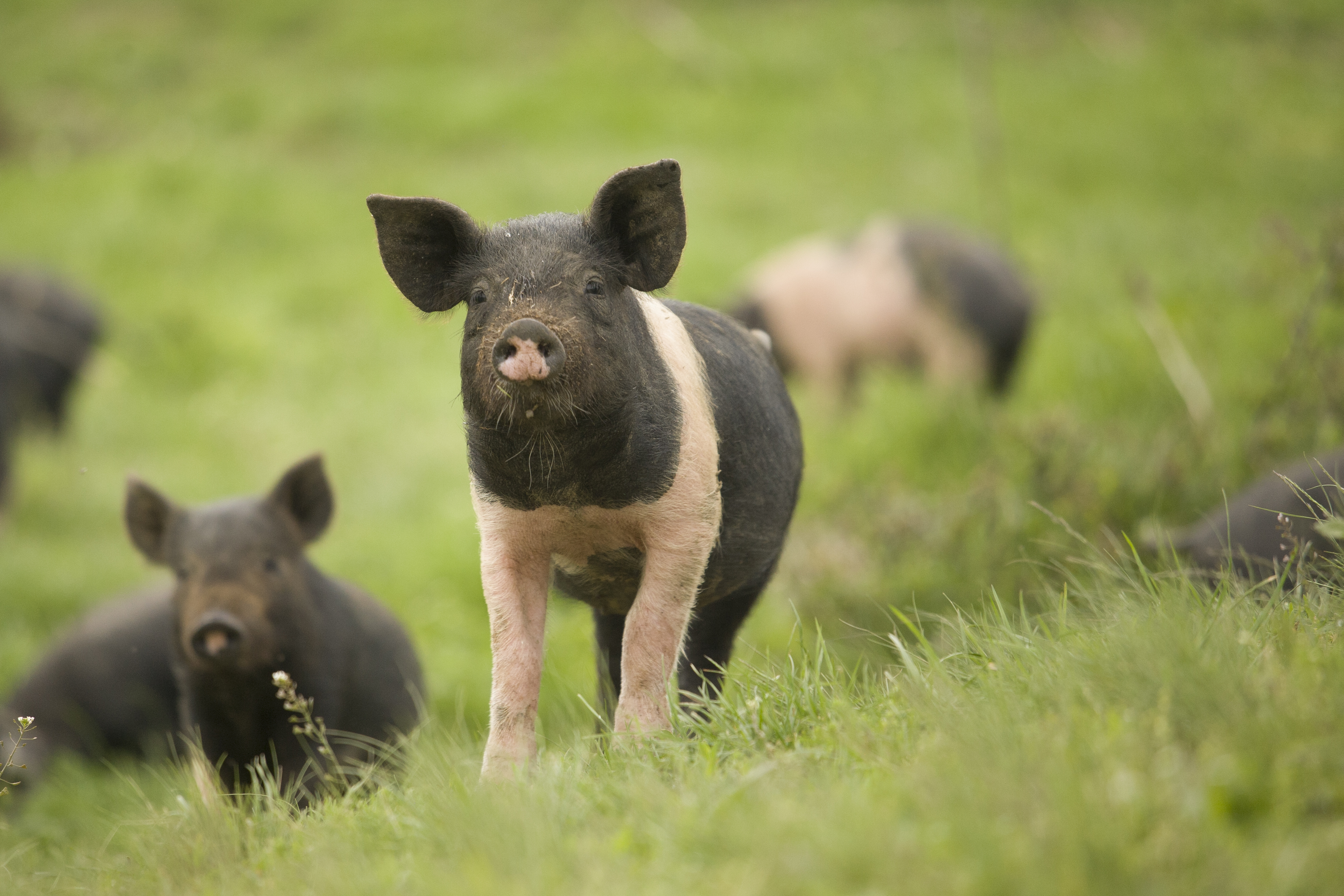
1 kilogram of ground Bazna pork
1 large onion
1 small carrot
15 grams of salt
3-4 grams of freshly ground pepper
4 allspice berries
10 coriander seeds
a bit of nutmeg
2 tablespoons of dense sour cream
a pinch of thyme
2 eggs
2 tablespoons of oil
dill and parsley, finely chopped
1 sheet of puff pastry
1 egg, beaten, to brush on the pastryPreparation and cooking time: 2 hoursFinely chop the onion and carrot and add them to the ground pork. Put the mixture in a pot with some oil and place on the stove. Add 100 milliliters of water and simmer for 10 minutes, until that the meat softens and the water is absorbed or evaporates. Add the salt, spices, sour cream, and thyme, and mix well. Let the mixture cool. Finally, add 2 eggs and the finely chopped dill and parsley, and mix well.
Line a baking pan with puff pastry and prick it several times with a fork. Pour in the meat mixture and make sure that it is evenly distributed. Cover with strips of puff pastry and then brush these with the beaten egg. Bake at 180° C for 50-60 minutes.
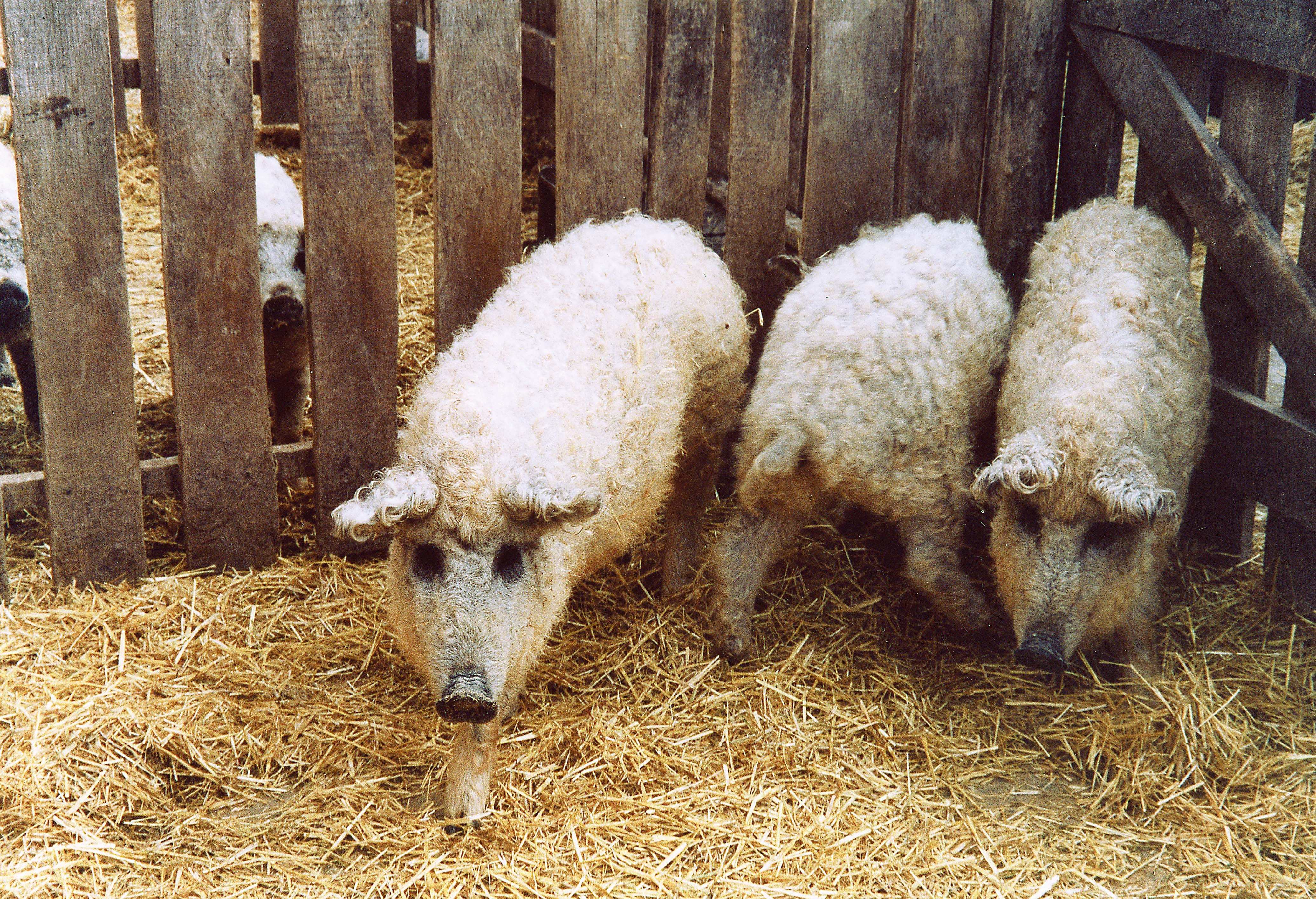
For 4 people
1 kilogram of onions
1.5 kilograms of Mangalica Sausage
500 grams of mangalica pig liver
tomato sauce
bay leaves
a bit of cured mangalica fat ( lardo ),
diced 3 tablespoons of paprika
cumin
garlic
2 tablespoons of vinegar salt
Preparation and cooking time: 1 hour and 30 minutes
Chop the onions and cook them in salted water for about 20 minutes. Flavor them with the vinegar, a few bay leaves, and salt. Cut the Mangalica Sausage into pieces and sauté with the onions, adding the cured mangalica fat, paprika, some cumin, some garlic, and the tomato sauce. Cover with water and cook until the meat is tender. In a separate pan, steam the liver and then cut it into pieces and add it to the stew. Serve with white bread.
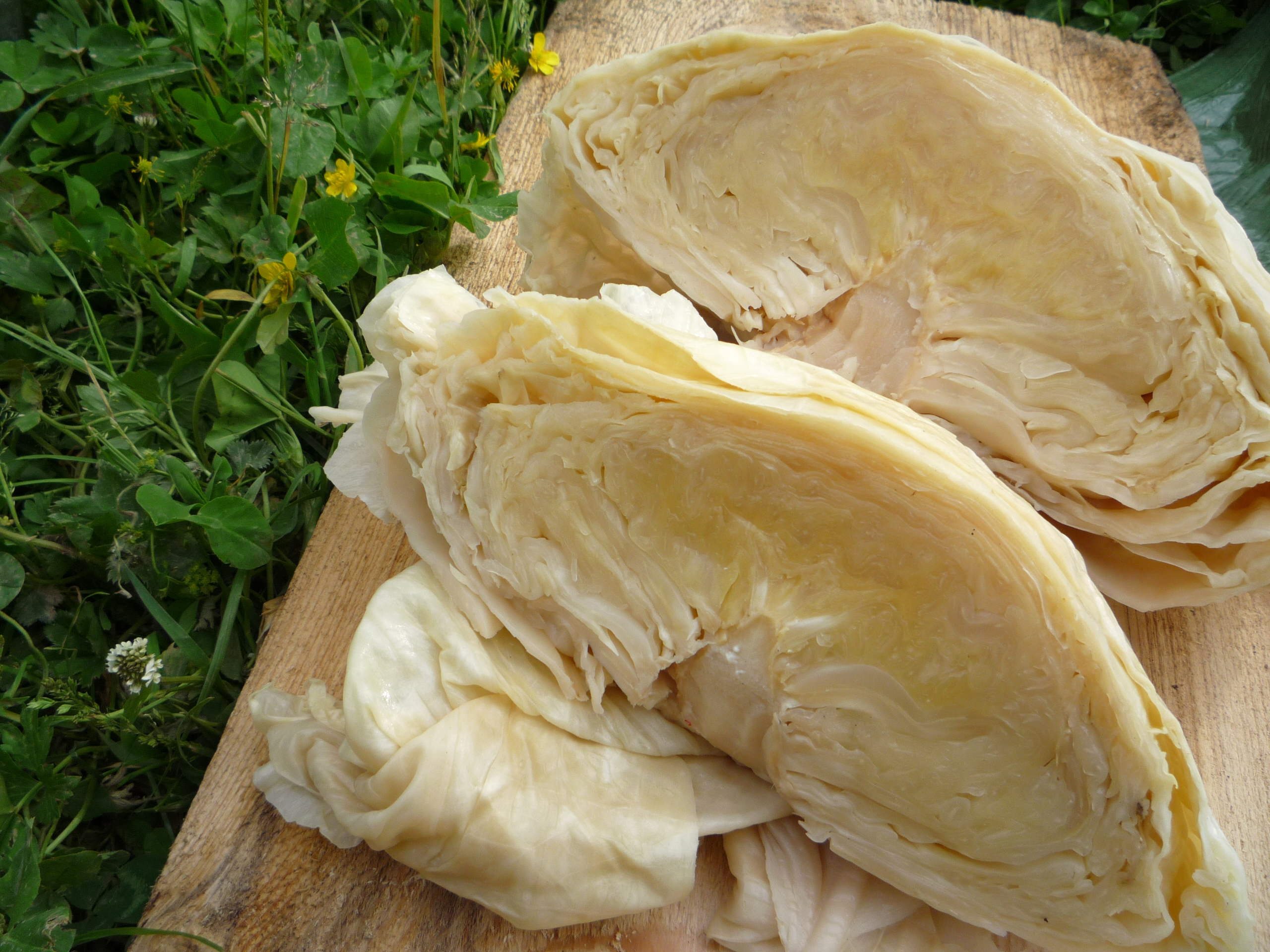
For 4 people
500 grams of Pit Cabbage, cut into thin strips
1 onion, chopped
100 grams of pork belly
1 tablespoon of lard
chives
salt
Preparation and cooking time: 1 hour and 15 minutes
Cut the pork belly into cubes and cook in the lard until golden brown. Add the chopped onion and the cabbage leaves. Add salt and some water and cook over a low flame for about 1 hour.Sprinkle with chives before serving.
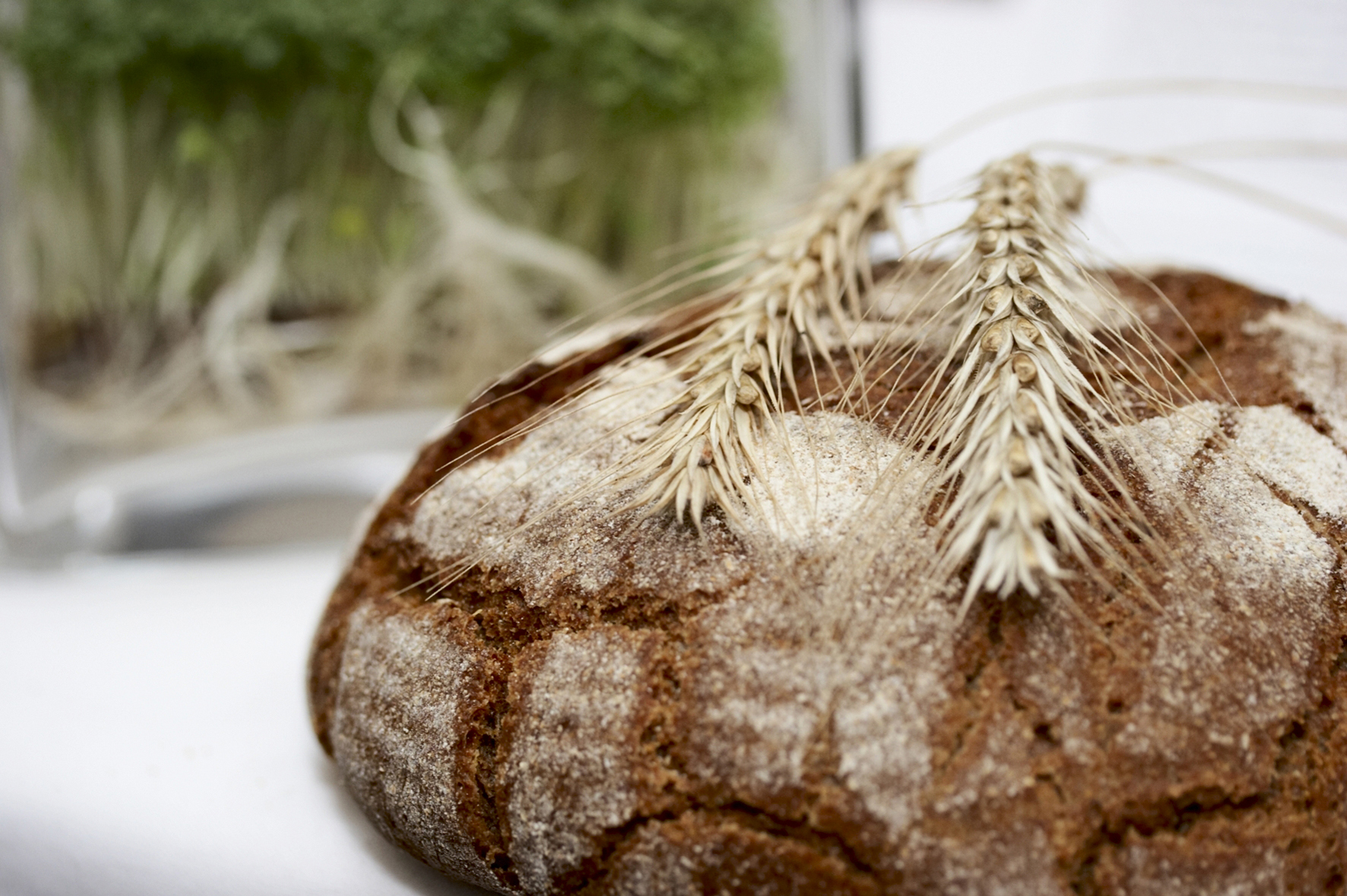
For 4 people
3 eggs
5 tablespoons of extra virgin olive oil
2 tablespoons of honey
baking soda
allspice
300 grams of Lungau Tauern Rye flour
250 grams of sugar
1 shot of espressoFor decorating
1 bar of dark chocolate
nuts
Preparation and cooking time: 1 hour
Mix the honey, eggs, and sugar until they form a creamy paste. Add the oil, allspice, baking soda, espresso, and then the rye flour. Put the mixture in a pan and bake for about 30 minutes at 180° C. Decorate with melted chocolate and nuts.
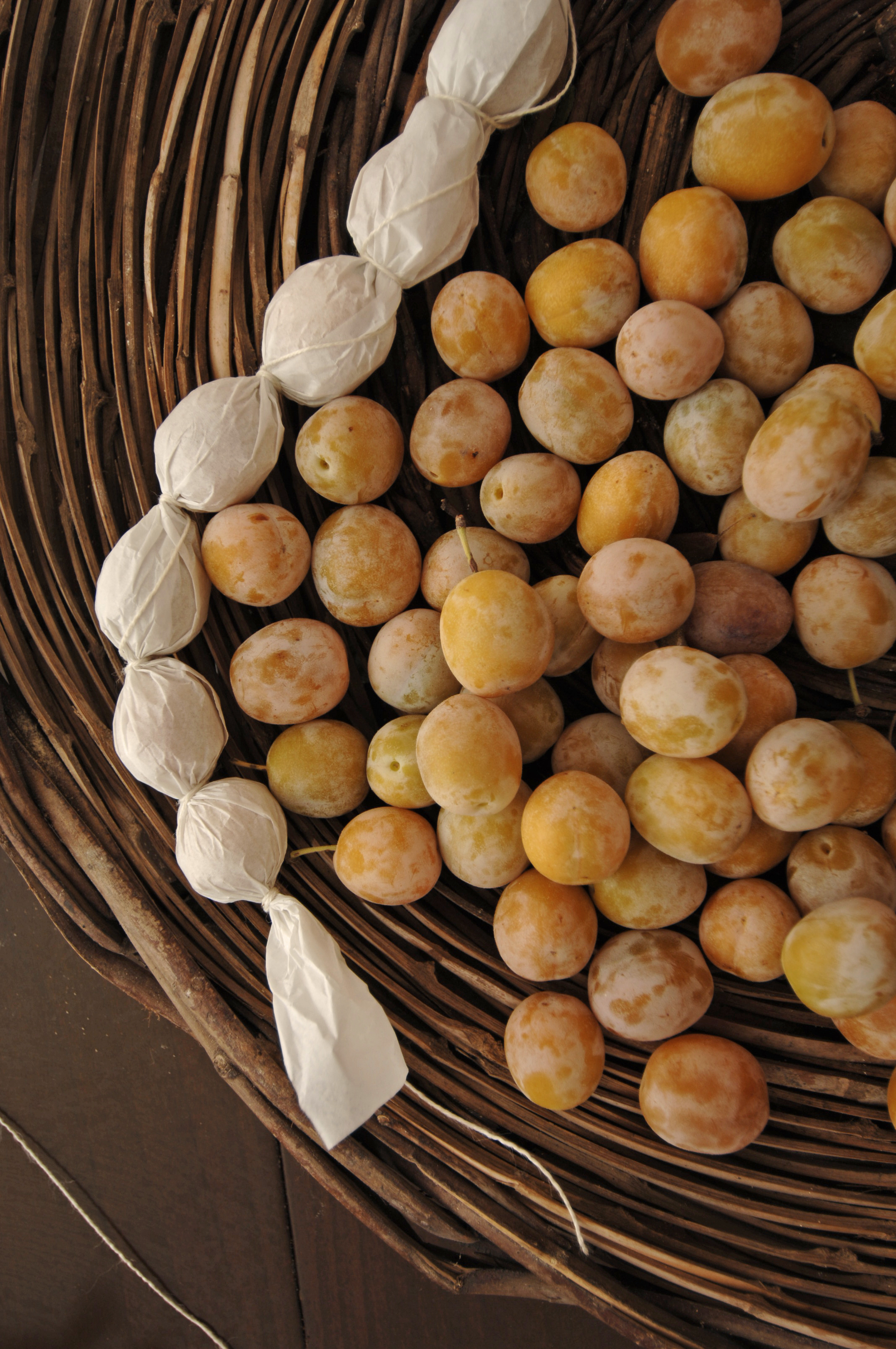
For 4 people
600 grams of pitten Monreale White Plums
50 grams of sugar
400 milliliters of water
juice of ½ lemonPreparation time: 4-5 hours
After washing the plums and removing the pits (you should have 600 grams of plum after the pits are removed), pass the fruit through a food mill and collect the pulp in a large bowl.Make a simple syrup by heating the sugar and water in a saucepan: Bring the liquid to a boil and then turn down the heat. Let the syrup simmer until it has reduced by about a third. Add the lemon juice. Let the syrup cool completely and then add it to the bowl with the plum pulp. Add the lemon juice. Mix everything together and then put the bowl in the freezer. After about an hour, stir/mash the mixture with a fork to keep it from solidifying. Let it freeze for another 2-3 hours, mixing every hour or so with the fork.
Serve the granita in small bowls or glasses.
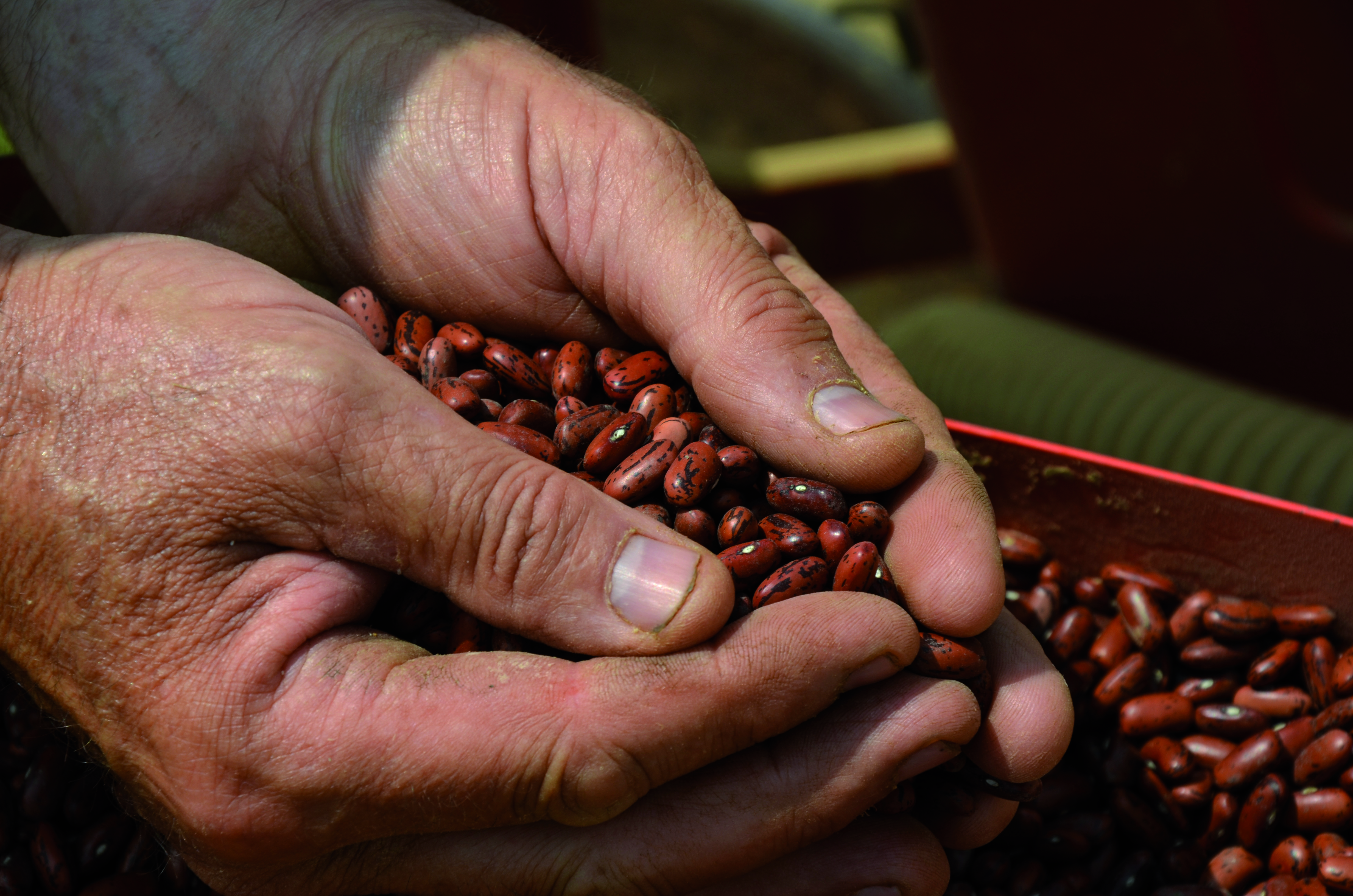
For 4 people
½ stick of celery
½ carrot
½ onion
40 grams of extra virgin olive oil
400 grams of Lucca Red Beans (previously soaked for 6 hours)
Broth
Rosemary
Salt
Pepper
A few slices of toast
150 grams of guanciale (cured pork jowl), from Cinta Senesa pigsPreparation and cooking time: 1 hour and 30 minutes (plus 6 hours for soaking the beans)Finely chop the celery, carrot, and onion and cook them with a little bit of olive oil over low heat in a heavy-bottomed pot. When the vegetables are soft, add the previously soaked beans and some rosemary, salt, and pepper. Add enough broth to cover the beans and simmer for about 1 hour (until the beans are soft). Use an immersion blender or regular blender to puree the beans into a thick cream.
Serve the puree in a shallow bowl with the toast, small cubes of guanciale (optionally browned in a pan), chopped rosemary, and a drizzle of extra virgin olive oil.
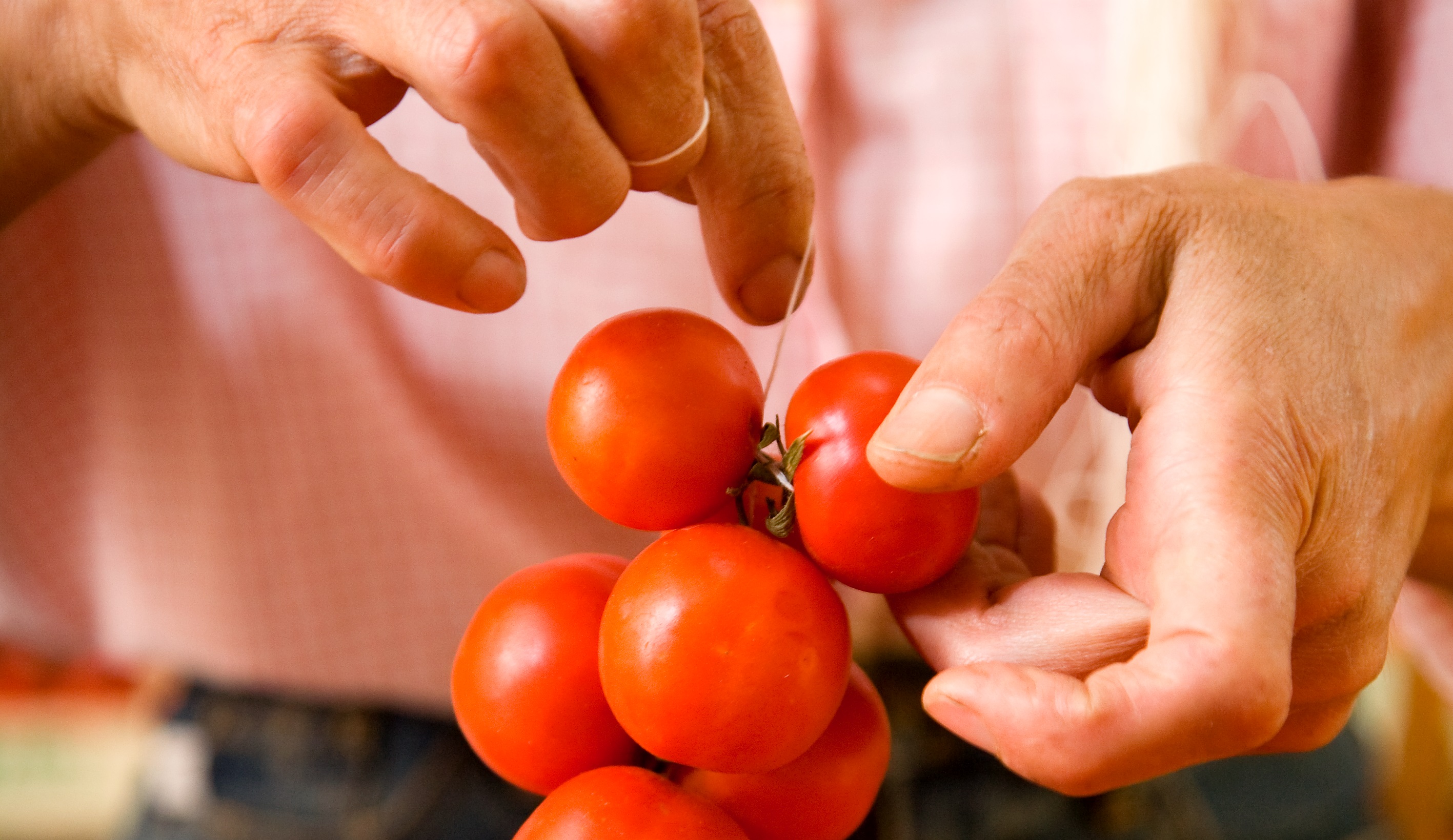
For 5 people
5 thick slices (200 grams each) of desalted* salt cod
700 grams of chard
250 grams of Torre Canne Regina Tomatoes
100 grams of ricotta forte (“strong ricotta” is a strongly flavored spreadable cheese from Puglia)
2 bay leaves
2 cloves of garlic
plenty of extra virgin olive oil
salt
pepper
*If you cannot find salt cod that has already been desalted, you will need to soak your salt cod in water for 3 days, changing the water every 12 hours, before making this dish.
Preparation and cooking time: 1 hour and 30 minutes
Place the slices of cod in a pot and submerge them in extra virgin olive oil. Put the pot on the stove and cook for 25-40 minutes (depending on the thickness of the cod), with the oil reaching a temperature of 65-70° C. Add the bay leaves and an un-peeled clove of garlic as the cod is cooking.
Meanwhile, blanche the chard in salted water for a few minutes and then chill the leaves in ice water to fix the color. Cut the tomatoes into halves or quarters and sauté them in a pan with olive oil and a whole, peeled clove of garlic. Add the cooked chard leaves and cook for a few minutes. Remove the garlic clove and season the tomatoes and chard with salt and pepper to taste.
Whip the ricotta forte with a fork until it becomes creamy.
Arrange the chard and tomatoes on a plate and place the cod on top of the vegetables. Spoon a bit of the whipped ricotta onto the plate beside the fish. Drizzle with extra virgin olive oil before serving.
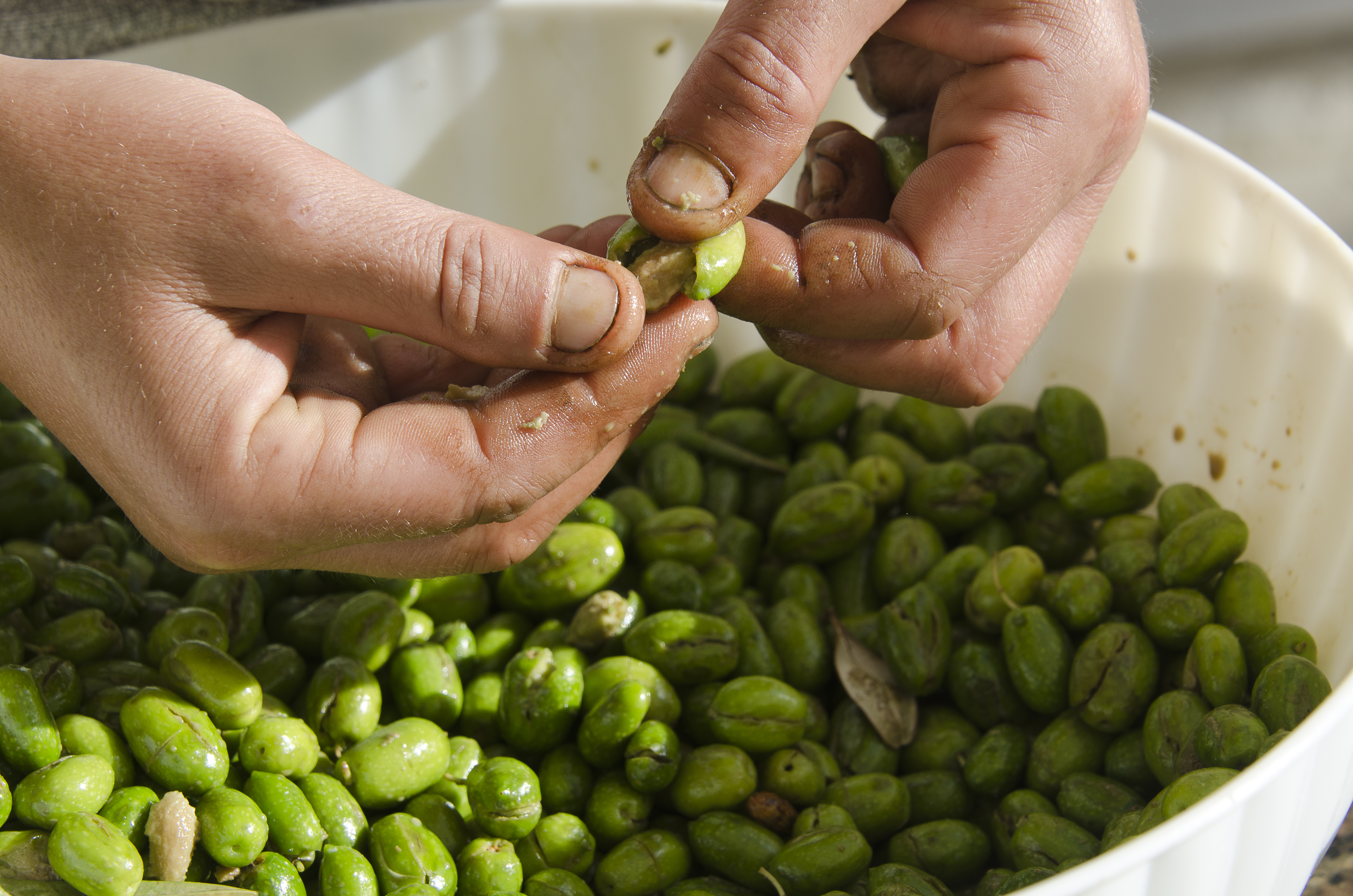
For 4 people
800 grams of bonito
400 grams of linguine
500 grams of sweet red peppers
16 pachino tomatoes
8 basil leaves
dill
2 cloves of garlic
extra virgin olive oil
fresh chili pepper
Cilento Cracked Salella Olives (about 4 tablespoons)
salt
pepper
Preparation and cooking time: 30-40 minutes
Cut the bonito into very small cubes. Wash the peppers, removing the seeds, and cut them into cubes, along with the tomatoes. Heat some olive oil and in a pan with the garlic cloves, un-peeled, and some chopped fresh chili (to taste). As soon as the oil is hot, add the peppers and tomatoes and let them soften over high heat for about 3 minutes. Lower the flame and add salt and pepper to taste.
Cook the linguine in plenty of salted water. When the pasta has reached ¾ of its cooking time (designated on the package), drain it, reserving some of the cooking water. Add the drained pasta, the reserved cooking water, and the basil leaves to the pan with the tomatoes and peppers and allow the pasta to finish cooking. When the pasta water has evaporated, add the bonito, the cracked olives, and a generous sprinkle of dill, and sauté for about a minute before serving.

Ingredients
Leg of Gargano goat
Peeled Toritto almonds
San Michele Salentino almond-stuffed fig
Coriander honey
Murgia lampascioni
Barriqued grappa
Polignano carrots
Asparagus
Coratina extra virgin olive oil
Oil aromatized with garlic
Butter
Yellow onion
Celery
Carrots
Rosemary
Sage
Salt
Black pepper
Bone leg of goat and eliminate any excess cartilage and fat. Reserve. Fillet meat and pound with a meat tenderizer. Rub powdered sage and rosemary on both sides and leave to rest in the fridge for 24 hours.
Stuff aromatized meat with figs and season with salt and pepper to taste. Roll up meat and tie with kitchen thread. Anoint meat with garlic oil and transfer to an airtight sous-vide pouch.
Cook in water at 65°C for 15 hours.
For demi-glace, take reserved goat bones, cartilage and fat, and roast in the oven at 185°C with a mixture of coarsely chopped celery, carrot, onion, bay leaves and rosemary sprigs until bronze in color. Transfer mixture to a large pan, add vegetable stock and cook for at least 12 hours. When the time has elapsed, filter liquid through a fine colander and leave to thicken over the heat, reducing by at least two thirds to a sauce.
For Toritto almond milk, soak 1 kg of peeled almonds in about 2 liters of water for 2 hours. Add another 2 liters of water and emulsify in a mixer to a smooth cream. Filter cream through a fine colander. Continue to stir to separate the liquid part from the solid.
For almond milk demi-glace, blend almond milk with the goat demi-glace over a low heat to reduce the volume by one third. Season with salt and pepper to taste.
For lampascioni with honey and grappa, clean lampascioni, wash and transfer to airtight sous-vide pouch. Cook in water at 75°C for about 12 minutes. Toss in butter. Add the coriander honey and barriqued grappa and allow the alcohol to evaporate.
For the side-dish of buttered carrots and asparagus, scrape carrots with a small sharp knife, wash and transfer to an airtight sous-vide pouch. Cook in water at 77°C for about 20 minutes. Eliminate the tough parts from asparagus, wash and transfer to an airtight sous-vide pouch. Cook in water at 75°C for about 8 minutes.
Before serving, toss vegetables in melted butter, season with salt and pepper to taste, and add a pinch of powdered sage and rosemary.

Serves 4
For the pappa
1 giant garlic clove
4 ripe canestrino tomatoes
1 bunch basil
3 slices day-old Tuscan bread
Chiusi Minuta extra virgin olive oil
salt and pepper
For the killer prawn crudité
10 killer prawns
1 bunch lemon verbena
juice ½ lemon verbena
Chiusi Minuta extra virgin olive oil
Salt
For the Chiana giant garlic cream
3 giant garlic cloves
600 ml milk
salt and pepper
Finely chop giant garlic and brown in oil in an earthenware pot. Cut and chop tomatoes and add to pot. Cook on a low heat. When tomato breaks up, add diced bread and whole basil leaves, dilute with a little warm water and season to taste with salt and pepper. Cook to a thick mush. Spoon into molds and blast chill at -18°C for a few minutes. Turn out pappa when it is almost frozen on the outside and creamy on the inside.
Blast chill prawns for 24 hours at -20°C, shell and gut, and arrange in a bowl, alternating layers of prawns with layers of lemon verbena leaves dressed in a citronette (made with lemon juice, Minuta oil, and salt). Leave to marinate for a few hours in a cool, dry place.
For Chiana giant garlic cream, pour a third of the cold milk into a saucepan and add garlic. Bring to the boil, then repeat with another 200 ml of milk. Repeat again with the remaining 200 ml of milk (each “cycle” should take about 10 minutes). Season with salt and liquidize.
To plate, spread a veil of garlic cream on the base of a dinner plate and cover with alternating layers of pappa semifreddo and prawn drained of the marinade liquid. Anoint with a splash of Minuta oil and decorate with lemon verbena leaves.
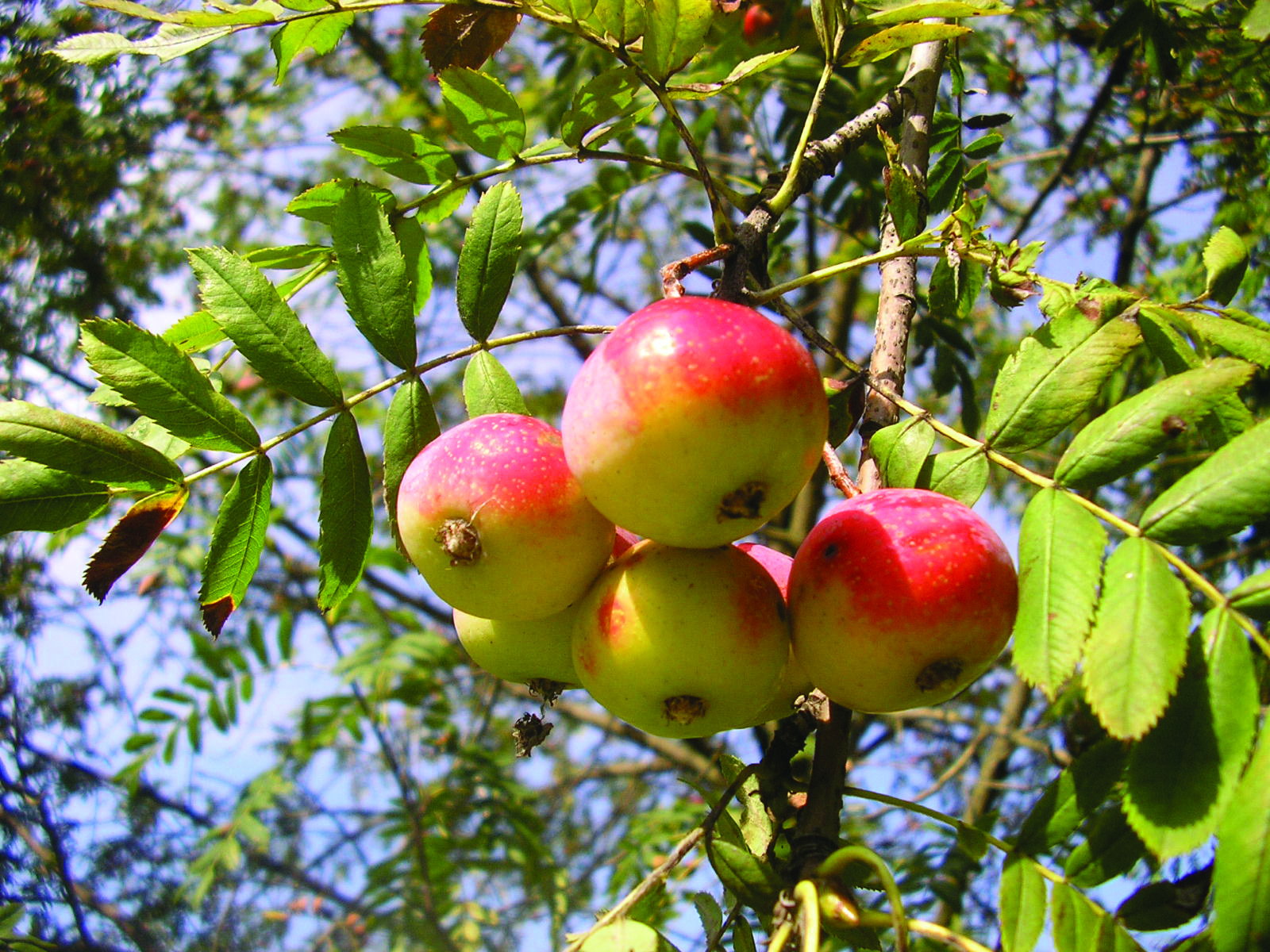
3 eggs
150 grams of sugar
100 grams of semolina
110 grams of vegetable oil
200 grams of flour
2.5 grams of cinnamon
10 grams of baking powder
~60 grams chopped walnuts
~300 grams of cored/halved ripe service fruits
Preparation and cooking time: 45 minutes
Preheat the oven to 200° C. Grease a baking pan with butter and dust with flour.
Beat the eggs and the sugar and then gradually add the semolina, oil, flour, cinnamon, baking powder, and chopped walnuts. Pour the batter into the prepared baking pan and then place the service fruit halves on top, skin side up. Bake for approximately 30 minutes (or until an inserted knife or skewer comes out clean).
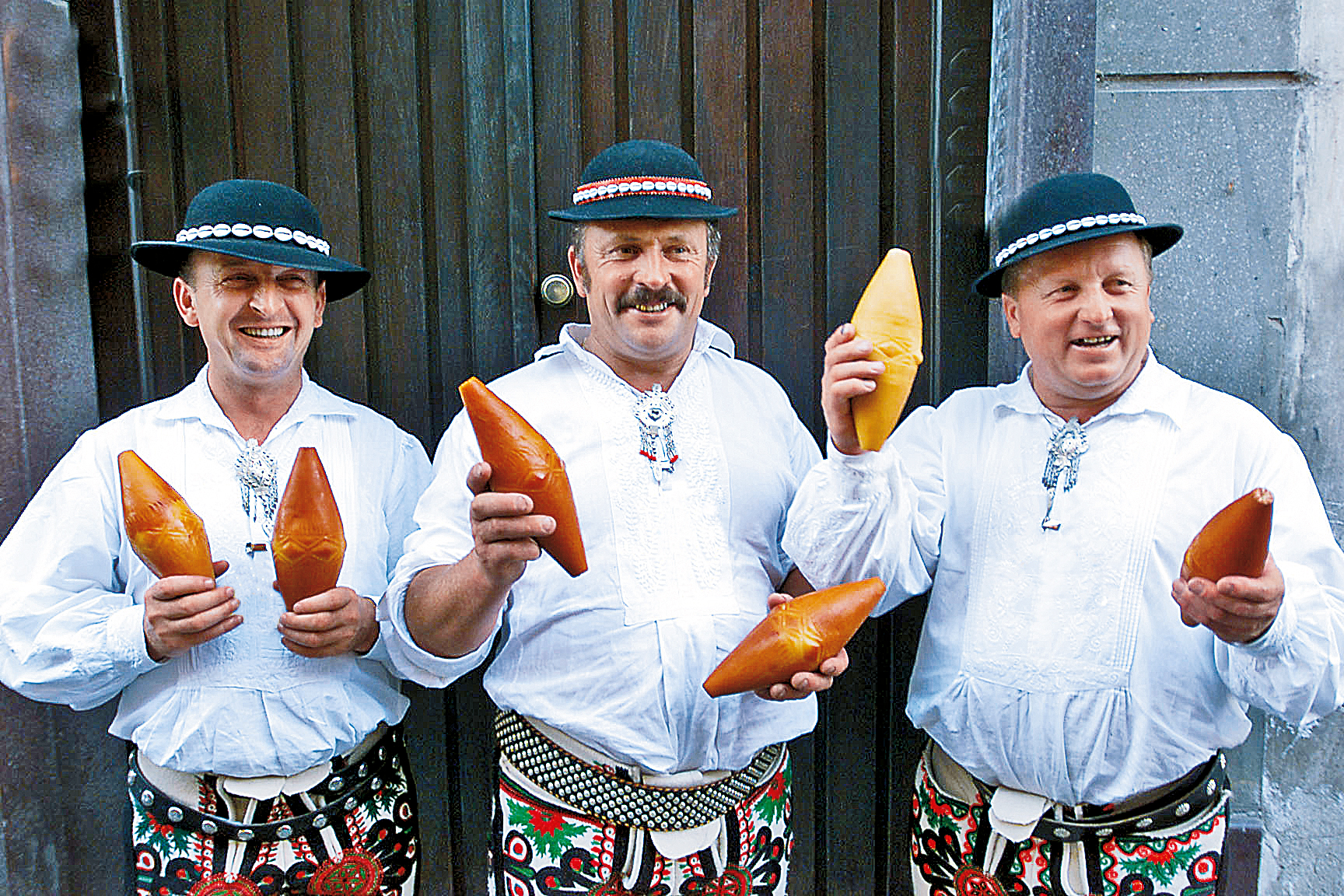
For 4 people
4 slices of Oscypek,
about 5 millimeters thick red currant jam
Preparation and cooking time: 15 minutes
Cook the slices of Oscypek on a hot griddle, turning them so that they heat all the way through without melting. Heating Oscypek makes it soft and releases its aromas. Serve the slices hot, topped with a spoonful of currant jam.
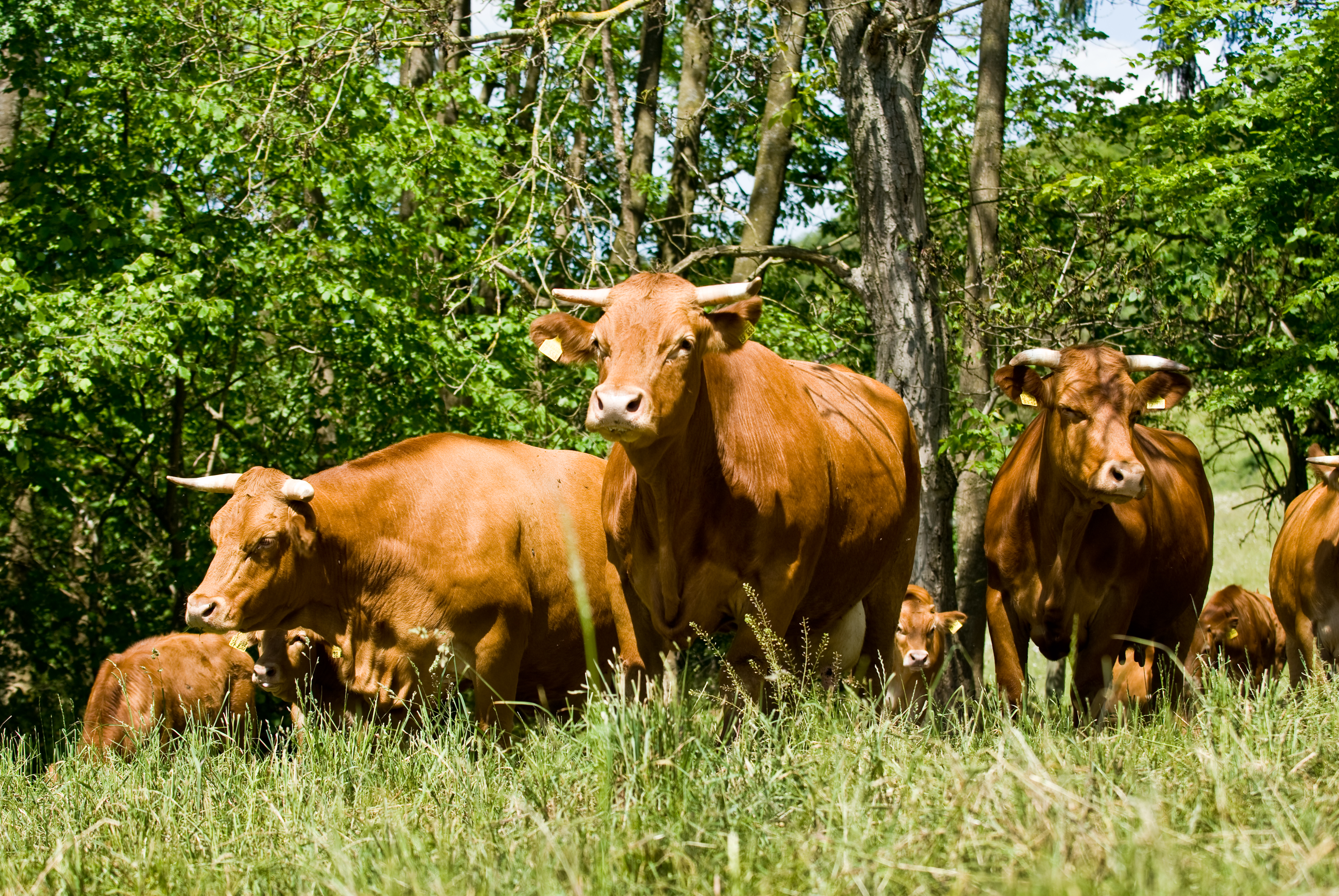
For 4 people
1.5 kilograms of Limpurg beef
2 onions
1 carrot
8 juniper berries
4 cloves
2 bay leaves
sugar
wine
vinegar
butter
lard
tomato
sauce
red wine
beer
125 grams of sour cream
dark rye
bread
black pepper
salt
Preparation and cooking time: 3 days + 3 hours
Clean and chop the onions and carrot and put them in a saucepan with the juniper berries, cloves, bay leaves, some sugar, and some salt. Add some water and wine vinegar to make a broth, and cook over low heat for 5 minutes. Set the pot aside and let the broth cool. Clean the beef, submerge it in the broth, and leave in the refrigerator for 3 days, turning it once a day. Preheat the oven to 180 C. Remove the meat from the marinade, dry it, and sprinkle with black pepper. In a heavy pot or Dutch oven, melt some lard and brown the beef on all sides. Add the tomato sauce and some red wine and beer. Filter the marinating broth and add it to the meat. Roast in the oven for about 2 hours. After 1 hour, add the bread. When the meat is cooked, remove it from the pot but keep it warm. Mix some sour cream into the sauce before serving it with the meat.
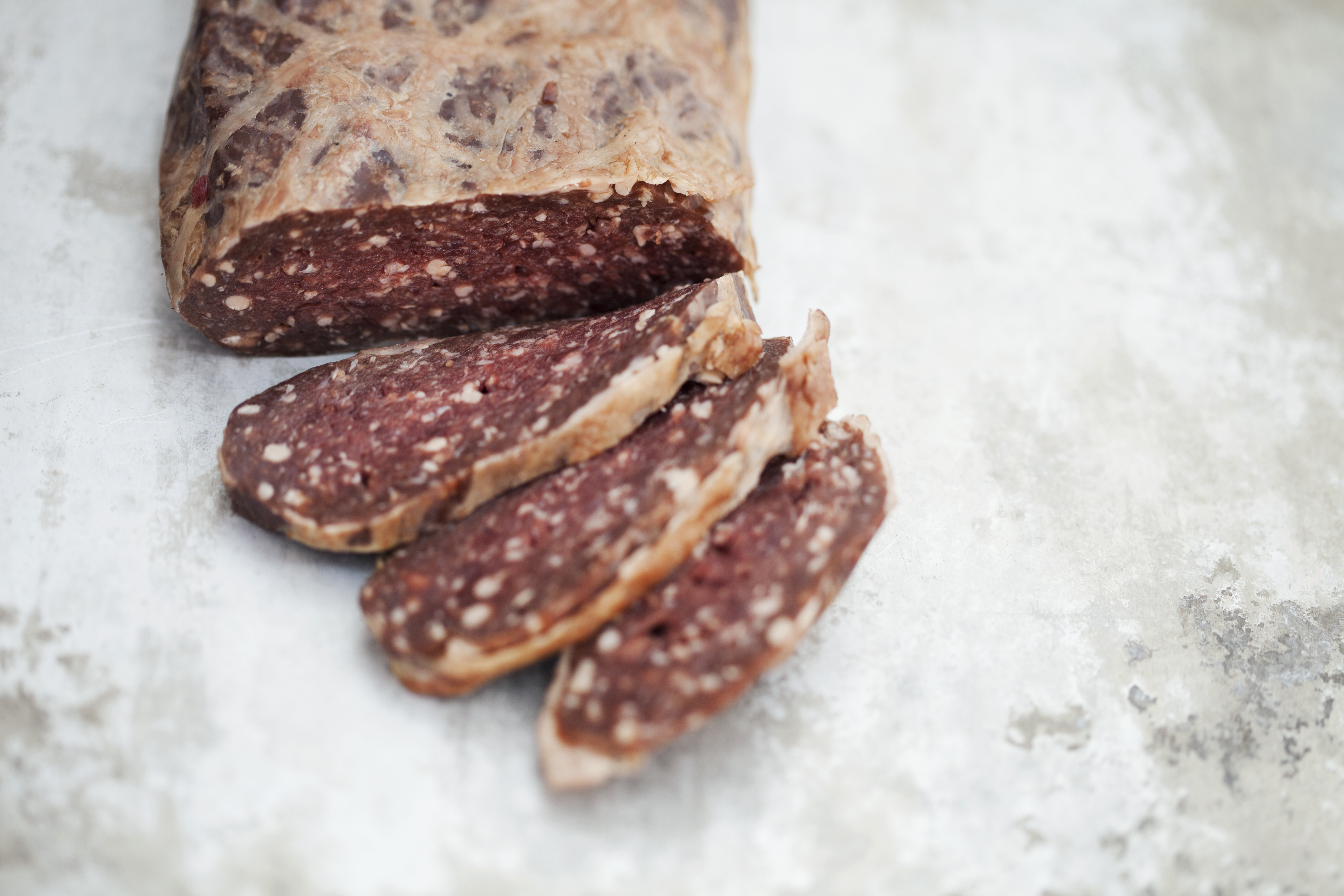
For 4 people
500 grams of Gurpi
200 grams of chanterelle mushrooms
Parsley
Preparation and cooking time: about 20 minutes
Cut the Gurpi into slices about 1 cm thick. Fry the slices in butter for 1 minute on each side. The slices should be slightly pink inside when cooked. Clean and salt the chanterelles and fry them in butter until they have softened and released their moisture. Let them dry on paper towel and then chop them roughly. Finely chop some parsley and mix it with the chanterelles before serving with the fried Gurpi slices. Mashed potatoes and red wine sauce are an excellent accompaniment (http://en.slowfoodsapmi.com/gurpi.html).
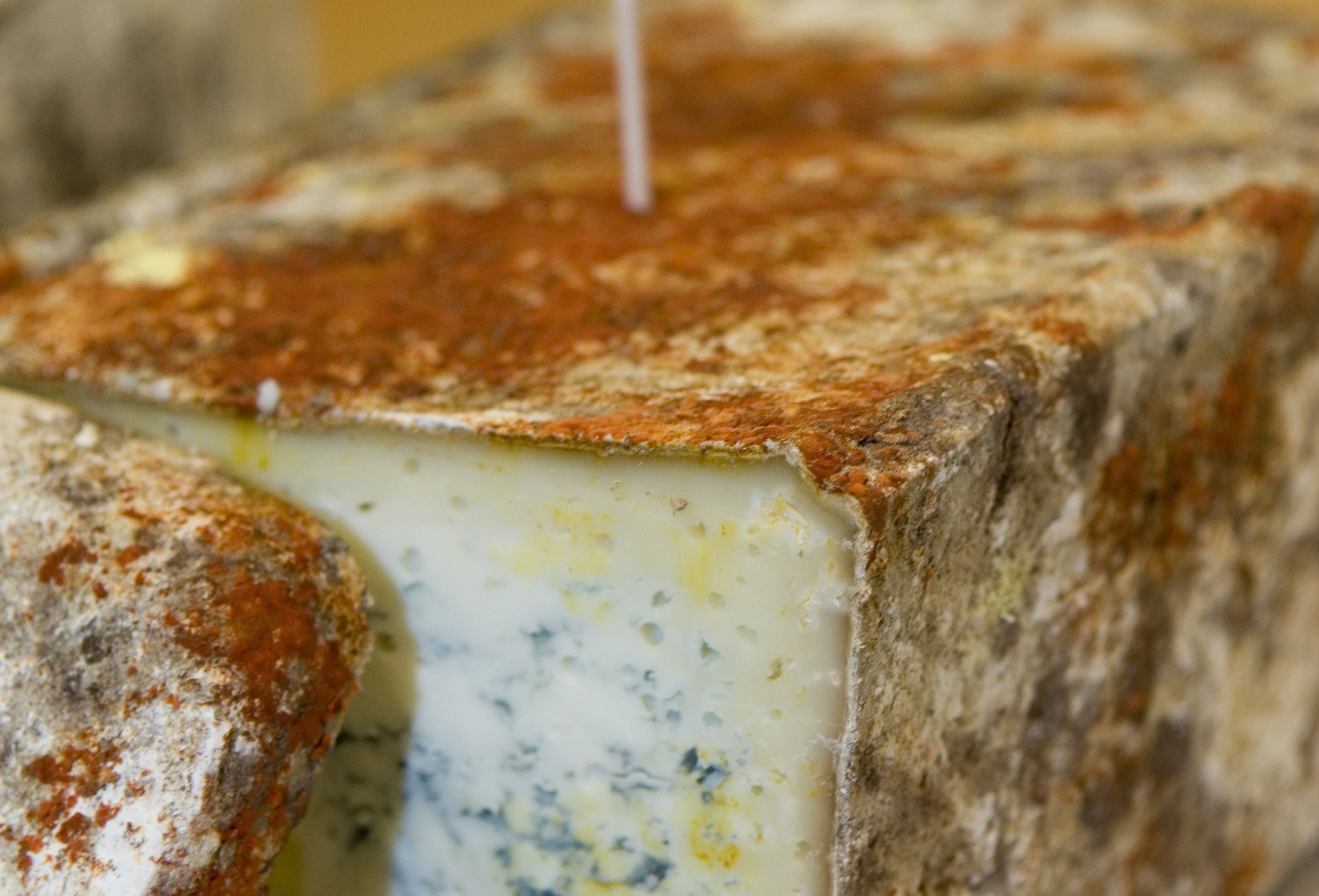
Recipe for 6 persons:
Fried been “gnocchi”
ca 300 gr boiled potatoes
20 gr dried leccinum mushroom 300 g källarlagrad getost
150 gr finely chopped onions
2 tbsp butter or olive oil
100 gr rostad pumpkin seeds 300 gr boiled öländsk brun böna The zest from one organic lemon 3 organic eggs
salt and peppar
1 liter oil for frying
Day 1
Put the beans in water (one part beans, three parts water) for 8-24 hours. The longer they sit the shorter they will have to boil.
Day 2
1. Rinse the beans in cold water and the boil them in fresh water (again one part beans three part water) under a lid for 20 minutes. Try a bean and see if its soft. Is it still hard let them boil for 10 more minutes. Continue to cook until soft but not mushy. 1 dl of beans will yield about 3 dl boiled beans. Let cool.
2. Put the dried mushrooms in water for about 10-15 minutes. Finely chop the onions. Squeeze the excess water out of the mushrooms and shop them finely, like the onion. Fry the mushroom and the onion in olive oil and let cool.
3. Rinse and boil the potatoes with their skin in salted water. When it’s ready pour out the water and dip the potatoes in cold water, Pull of the skin. Press the potatoes with a masher in a big bowl.
4. While you are boiling the potatoes fry the goat cheese until it has a crusty surface on both sides. Let it cool. Cut of the crispy part and save it for the plating. Grate the rest of the cheese with a cheese grater.
5. Mix the boiled and cool beans with roasted pumpkin seeds with a food processor. Gently blend the bean and pumpkin mixture with the fried mushrooms and onions and goat cheese. Grate the zest of one lemon and crack three eggs into the mixture. Blend well. Cover and put to a side.
Gooseberry salsa with chili
Chili paste:
1 semi dried ancho chili 4 fresh padrone chilies 4-5 cloves of garlic
1 dl olive oil
1 dl organic rapeseed oil
1. Heat the oil in a frying pan on middle heat.
2. Peel the garlic cloves. Lightly fry the garlic, the chilies in the oil until the garlic is nice and golden. Make sure the oil isn’t too hot, otherwise the chilis will become too crispy.
3. Take out the chilis and garlic and put the oil to a side. Rinse the chilies from seeds and stalks. Mix the chili and garlic and add oil until it reaches the consistency of puré. Finnish with salt and pepper to taste.
Gooseberry salsa:
100 gr chopped onions
2 tbsp butter
2 tbsp raw sugar
150 gr rinsed gooseberries – both red and green ones juice of one lemon.
1-2 tsp of fermented bean pate. Salt and pepper to taste.
1. Melt the butter in a heavy pan. Add the chopped onion and fry until golden. Pour over the sugar and caramelize the onions
2. Add the berries and let them simmer with the onion until soft.
3. Add the chili pure (taste and add until it’s hot enough for your taste.
4. Add the lemon juice and bean paste to taste. Salt and pepper. Simmer until it gets a consistency you like. Put to a side until serving.
Flatbread
100 gr sour dough
2.5 dl lukewarm water
6-7 Öländsk lantvete (wheat from Öland) 1 tsp sea salt
3 tbsp coffee
2 tbsp olive oil
1. Mix the sour dough with 0.5 dl water. Add 3 tbsp wheat and stir until a soft paste. Let rise under a cloth for about 30 minutes.
2. Add the rest of the water, flour and salt. let it rise for another 2 hours.
3. Cut the dough in 12 pieces and shape into balls. Roll out thin, round bread cakes on a well flowered table. Fry the breads on middle heat in a frying pan without fat for a couple of minutes on each side. It should get a nice colour on both sides.
4. Put the breads between a baking cloth to cool and to avoid them drying. The bread can be made in advance and freeze until use.
Soured cream
1. Put 2 dl of soured cream into a piping bag.
Sallad
About 30 grams of mixed herbs and leaves per portion. I used shoots and small leaves of beets, spinach, lovage, young rhubarb, warty cabbage and arugula. Top it of with herb oil, salt and pepper.
Plating
1. Heat the oil to about 175 c.
2. Prepare a tray with paper to put the bean gnocchi to dry. Fry the bean gnocchis until golden brown on both side and crispy. Put it on the paper to dry.
3. Warm the flat bread.
4. Arrange the bread on a plate. Put the sallad in the middle. Put 3-5 pieces of gnocchi on top. Pipe 4-5 dots of soured cream over the dried beans. Add 2-3 tsp gooseberry salsa. Drizzle some olive oil and crumble the crispy cheese skin over the cream. Finally garnish with some of the summers edible flowers.
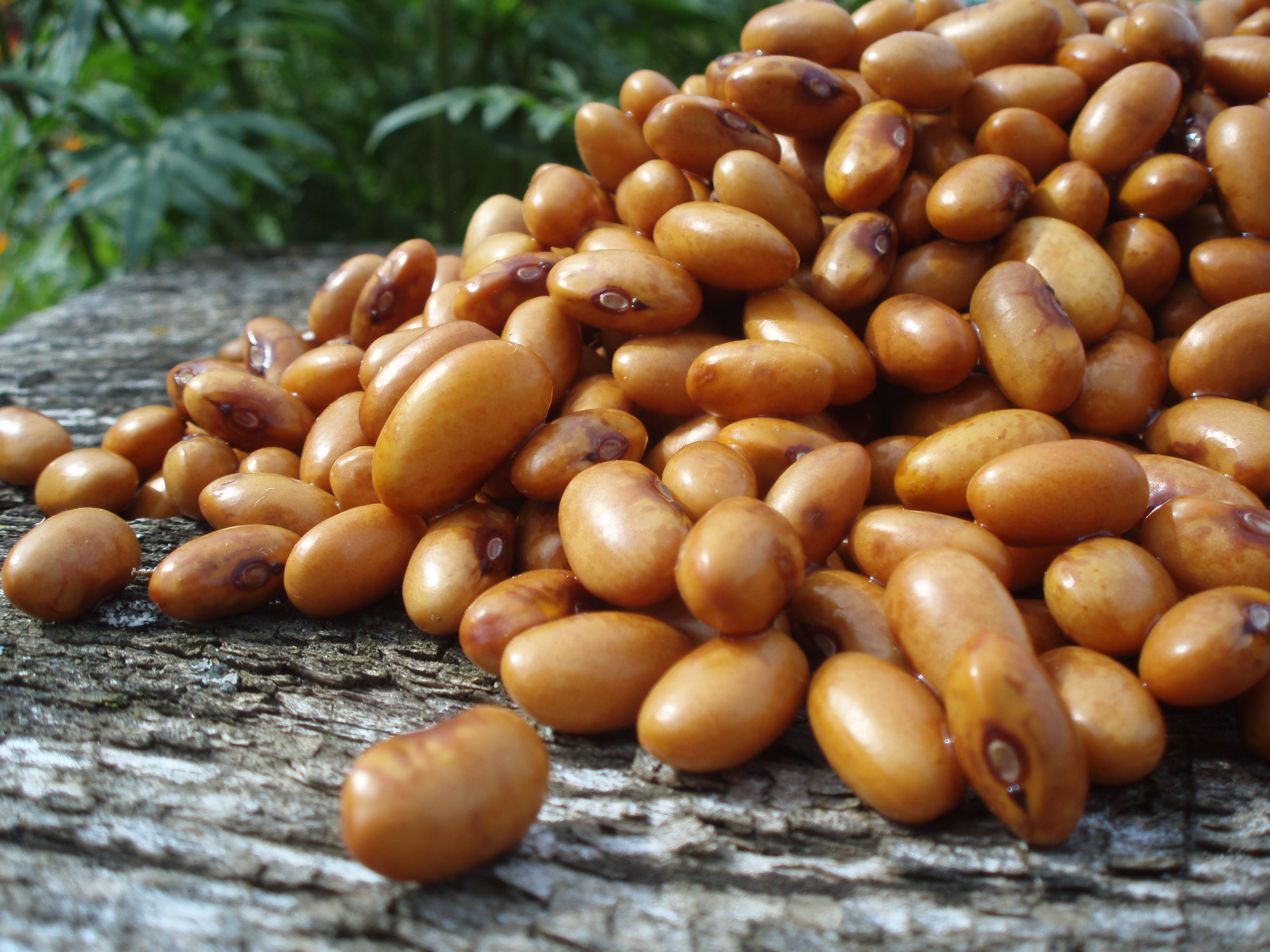
Recipe for 6 persons:
Fried been “gnocchi”
ca 300 gr boiled potatoes
20 gr dried leccinum mushroom 300 g källarlagrad getost
150 gr finely chopped onions
2 tbsp butter or olive oil
100 gr rostad pumpkin seeds 300 gr boiled öländsk brun böna The zest from one organic lemon 3 organic eggs
salt and peppar
1 liter oil for frying
Day 1
Put the beans in water (one part beans, three parts water) for 8-24 hours. The longer they sit the shorter they will have to boil.
Day 2
1. Rinse the beans in cold water and the boil them in fresh water (again one part beans three part water) under a lid for 20 minutes. Try a bean and see if its soft. Is it still hard let them boil for 10 more minutes. Continue to cook until soft but not mushy. 1 dl of beans will yield about 3 dl boiled beans. Let cool.
2. Put the dried mushrooms in water for about 10-15 minutes.Finely chop the onions. Squeeze the excess water out of the mushrooms and shop them finely, like the onion. Fry the mushroom and the onion in olive oil and let cool.
3. Rinse and boil the potatoes with their skin in salted water. When it’s ready pour out the water and dip the potatoes in cold water, Pull of the skin. Press the potatoes with a masher in a big bowl.
4. While you are boiling the potatoes fry the goat cheese until it has a crusty surface on both sides. Let it cool. Cut of the crispy part and save it for the plating. Grate the rest of the cheese with a cheese grater.
5. Mix the boiled and cool beans with roasted pumpkin seeds with a food processor. Gently blend the bean and pumpkin mixture with the fried mushrooms and onions and goat cheese. Grate the zest of one lemon and crack three eggs into the mixture. Blend well. Cover and put to a side.
Gooseberry salsa with chili
Chili paste:
1 semi dried ancho chili 4 fresh padrone chilies 4-5 cloves of garlic
1 dl olive oil
1 dl organic rapeseed oil
1. Heat the oil in a frying pan on middle heat.
2. Peel the garlic cloves. Lightly fry the garlic, the chilies in the oil until the garlic is nice and golden. Make sure the oil isn’t too hot, otherwise the chilis will become too crispy.
3. Take out the chilis and garlic and put the oil to a side. Rinse the chilies from seeds and stalks. Mix the chili and garlic and add oil until it reaches the consistency of puré. Finnish with salt and pepper to taste.
Gooseberry salsa:
100 gr chopped onions
2 tbsp butter
2 tbsp raw sugar
150 gr rinsed gooseberries – both red and green ones juice of one lemon.
1-2 tsp of fermented bean pate. Salt and pepper to taste.
1. Melt the butter in a heavy pan. Add the chopped onion and fry until golden. Pour over the sugar and caramelize the onions
2. Add the berries and let them simmer with the onion until soft.
3. Add the chili pure (taste and add until it’s hot enough for your taste.
4. Add the lemon juice and bean paste to taste. Salt and pepper. Simmer until it gets a consistency you like. Put to a side until serving.
Flatbread
100 gr sour dough
2.5 dl lukewarm water
6-7 Öländsk lantvete (wheat from Öland) 1 tsp sea salt
3 tbsp coffee
2 tbsp olive oil
1. Mix the sour dough with 0.5 dl water. Add 3 tbsp wheat and stir until a soft paste. Let rise under a cloth for about 30 minutes.
2. Add the rest of the water, flour and salt. let it rise for another 2 hours.
3. Cut the dough in 12 pieces and shape into balls. Roll out thin, round bread cakes on a well flowered table. Fry the breads on middle heat in a frying pan without fat for a couple of minutes on each side. It should get a nice colour on both sides.
4. Put the breads between a baking cloth to cool and to avoid them drying. The bread can be made in advance and freeze until use.
Soured cream
1. Put 2 dl of soured cream into a piping bag.
Sallad
About 30 grams of mixed herbs and leaves per portion. I used shoots and small leaves of beets, spinach, lovage, young rhubarb, warty cabbage and arugula. Top it of with herb oil, salt and pepper.
Plating
1. Heat the oil to about 175 c.
2. Prepare a tray with paper to put the bean gnocchi to dry. Fry the bean gnocchis until golden brown on both side and crispy. Put it on the paper to dry.
3. Warm the flat bread.
4. Arrange the bread on a plate. Put the sallad in the middle. Put 3-5 pieces of gnocchi on top. Pipe 4-5 dots of soured cream over the dried beans. Add 2-3 tsp gooseberry salsa. Drizzle some olive oil and crumble the crispy cheese skin over the cream. Finally garnish with some of the summers edible flowers.
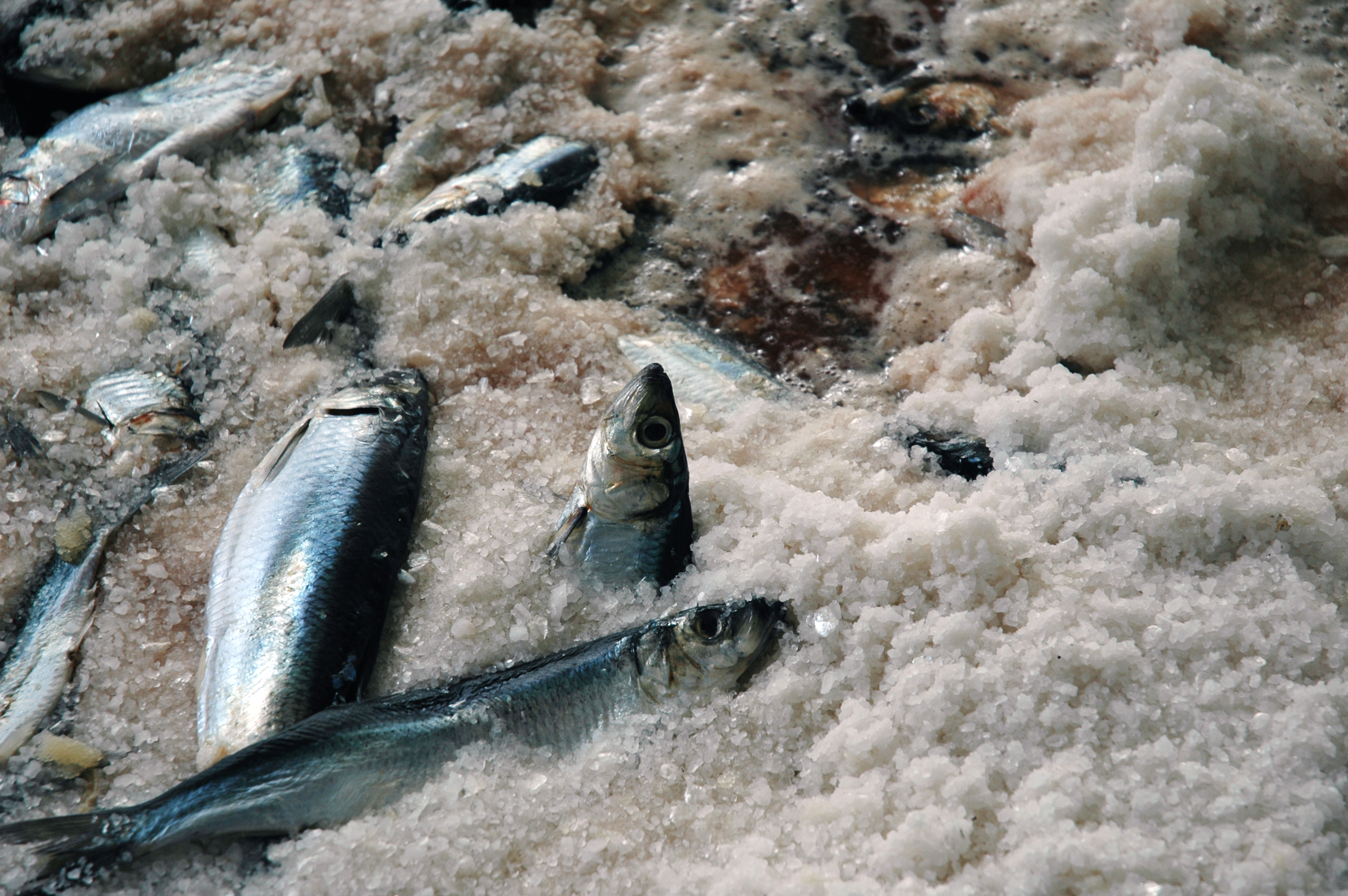
For 4 people
3 fillets of Cured and Smoked Sunnmøre Herring
6 potatoes,
boiled 2 apples, sliced into small pieces
2 red beets, sliced into small pieces
half an onion, sliced into strips
3 eggs, hard boiled and sliced
300 ml of sour cream pepper salt
Preparation time: 30 minutes
Place the boiled potatoes in a bowl with the sliced hard boiled eggs. Add the herring fillets, onion, apples, and beets. Finally, add the sour cream and season with salt and pepper.
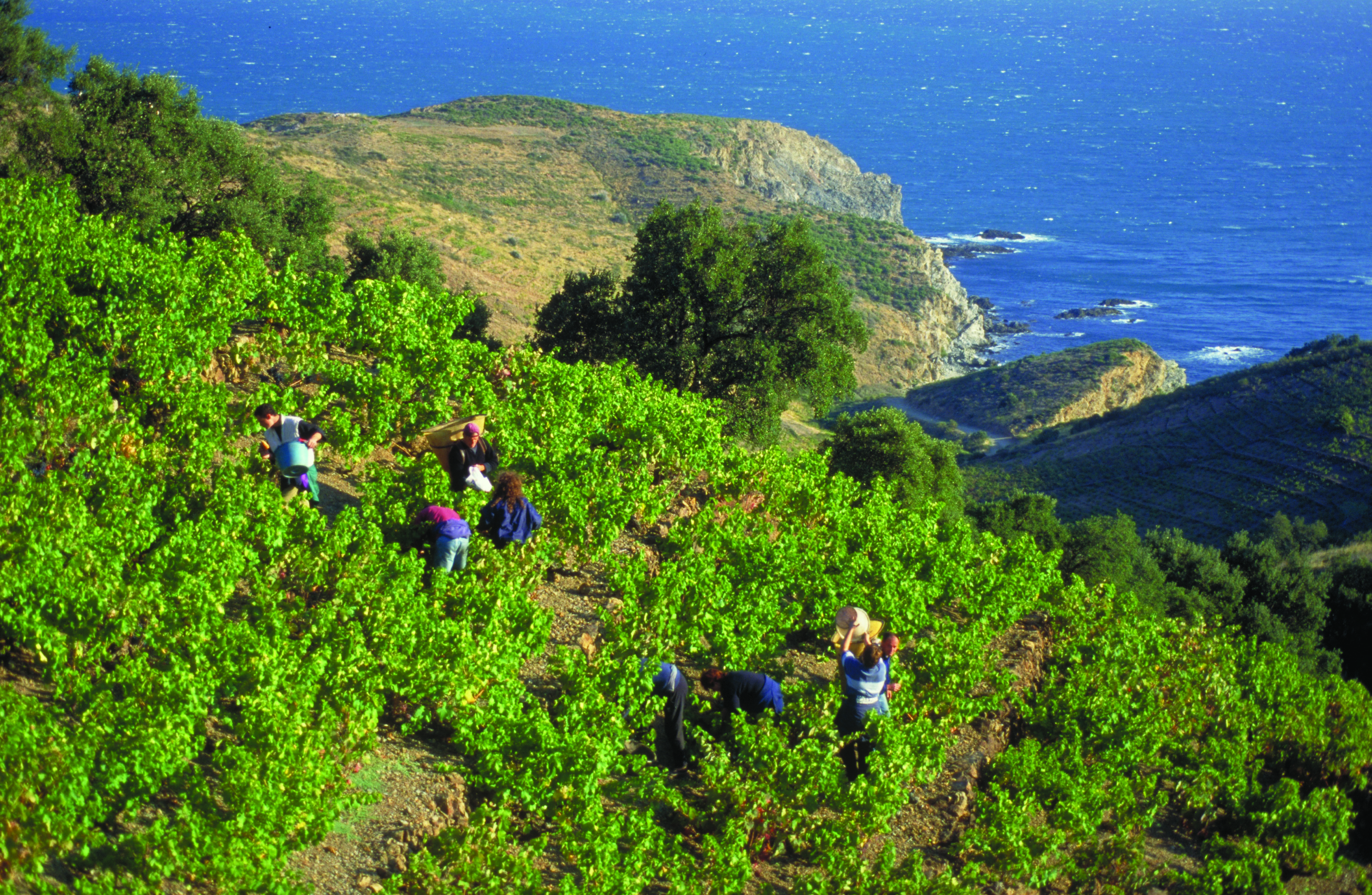
For 4 people
1 kilogram of beef
500 grams of pork sausage
5 ripe tomatoes, cut into small dice
tomato sauce
4 onions
2 or 3 cloves of garlic
1 or 2 baguettes, soaked in water or milk
4 egg whites
1 sprig of parsley, chopped
300 milliliters of Roussillon Dry Rancio Wine ( rancio sec )
400 grams of olives
400 grams of champignon mushrooms, sliced
extra virgin olive oil
salt
pepper
Preparation and cooking time: 2 hours
Sauté the sliced mushrooms and the olives in extra virgin olive oil. Chop the meat and 2 onions and add 1-2 cloves of crushed garlic, the parsley, egg whites, and soaked baguette. Season with salt and pepper and then mix until creamy. Form the meatballs.
Meanwhile, chop 2 onions and 1 clove of garlic and brown them in a saucepan. Add the rancio sec and diced tomatoes. Cook for 5 minutes. Add the tomato sauce and some water and bring to a boil. Cook the meatballs in the sauce over a low flame, with the pot uncovered, for about 30 minutes. Add the sautéed mushrooms and olives.
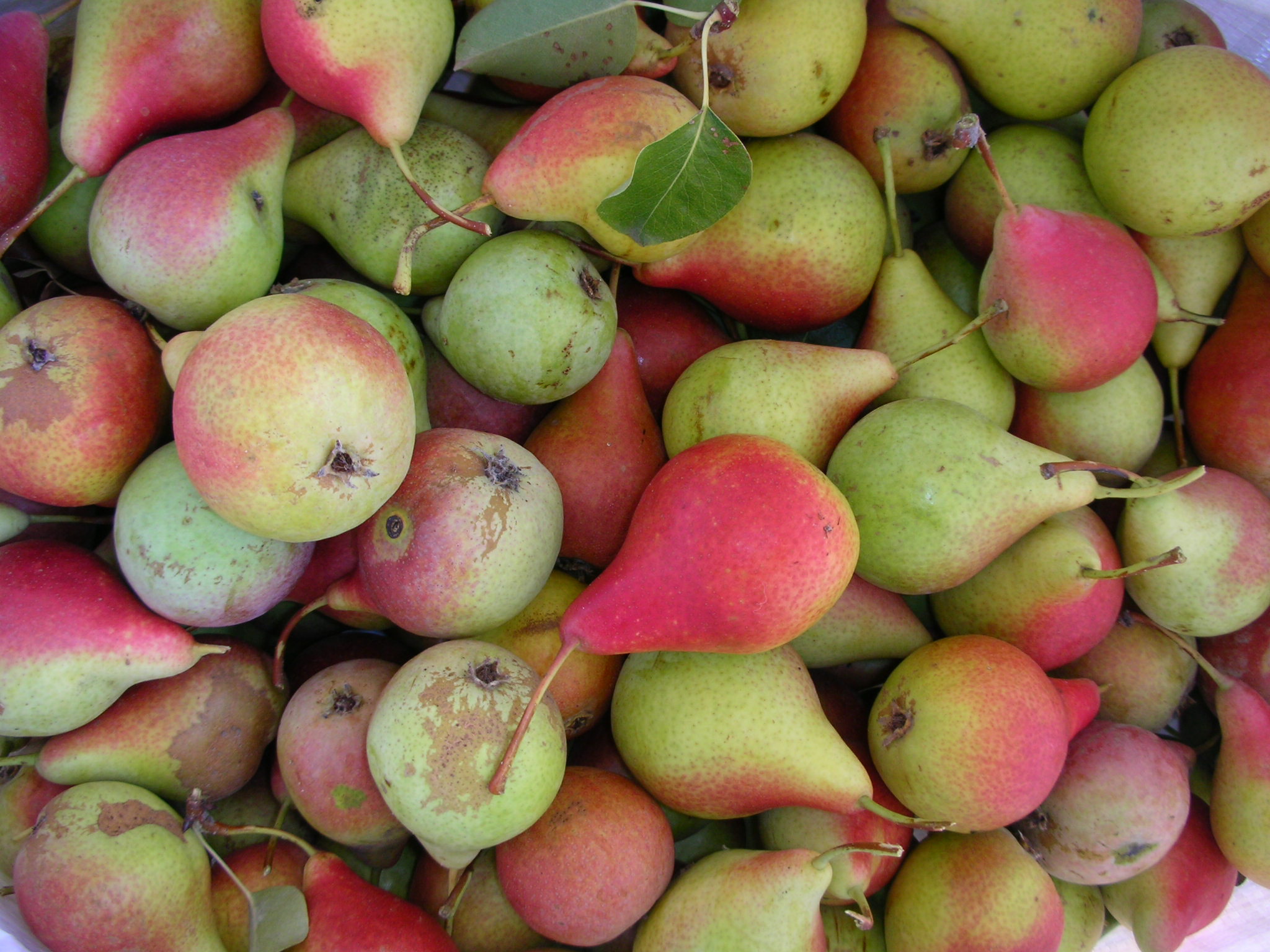
For the poached pears:
6 Sarteau pears, peeled
1 liter of water
500 grams of sugar
juice of 1 lemon
vanilla
For the pastry:
250 grams of flour
125 grams of butter, chilled
pinch of salt
pinch of sugar
1 egg yolk (optional)
a little water, if necessary
For the almond cream:
100 grams of sugar
100 grams of powdered almonds
100 grams of butter, room temperature
2 eggs
rum (optional)
Preparation and cooking time: 1 hour and 15 minutes
Preheat the oven to 180° C. Poach the pears: Make a simple syrup with the sugar and water, poach the pears for about 10 minutes, and then drain them. Now simmer the pears in water until they are fork tender, then drain them and put them aside.Make the pastry: Cut the chilled butter into slices. With your fingertips, mix the butter and a pinch of salt into the flour. Create a mound and make a crater in the middle. Mix the egg yolk with a little bit of water and pour it into the crater. Gently mix everything together and knead the dough just until it comes together and is smooth, with no chunks. Form the dough into a ball, wrap it in wax paper, and let it rest in the fridge for 30 minutes.While the dough is resting, make the almond cream: Cream the butter and sugar and then add the eggs, one at a time. Mix until a smooth cream is obtained (do not overwork). Incorporate the rum and the powdered almonds.Flour your work surface and roll out the chilled pastry dough. Grease and flour a tart mold and lay in the pastry, pressing it gently against the sides of the mold. Prick the pastry all over with a fork. Spread the almond cream evenly over the pastry shell and then lay the poached pears (cut into halves, quarters, or slices, as you wish) on top. Cook for 30-35 minutes.
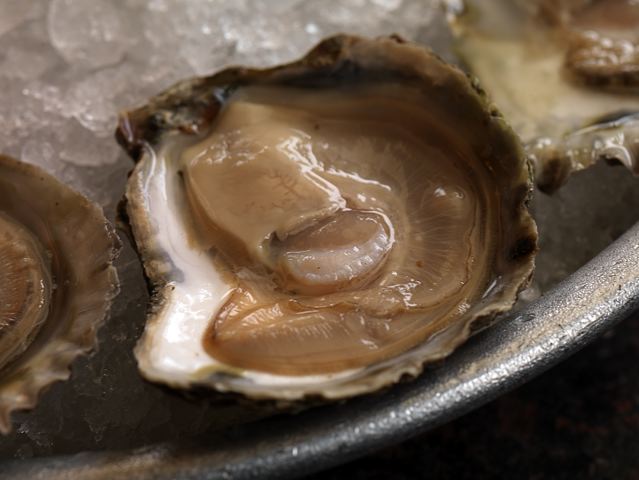
Ingredients
juice of 1-2 limes
4 tbsp vegetable stock
1 tsp sugar
1 tsp salt
1tsp lemon vinegar
1 tsp olive oil
fresh herbs, finely chopped
6 tbsp olive oil
8 Fal Oysters
2 fennel for confit
100g Black Quinoa
50g Pearl Quinoa
100g Crème Fraiche
! bunch dill made into oil
1 lemon, for zesting
Make the ceviche dressing by mixing the lime juice, vegetable stock, sugar, salt, vinegar & olive oil together. Adjust the sweet and sour balance, adding a little extra lime juice or sugar to taste.
Open the oysters as close to serving as possible. Spoon the marinade over & arrange the other elements on top as you like.
It’s really important that it is served at room temperature so that you can appreciate the full flavour of the shellfish. Sprinkle with the crispy quinoa & grate the lemon over the dish. This gives a lovely perfume to the dish.
Serve immediately – the dressing ‘cooks’ the oyster so don’t dress more than five minutes before eating as it will turn it to mush.
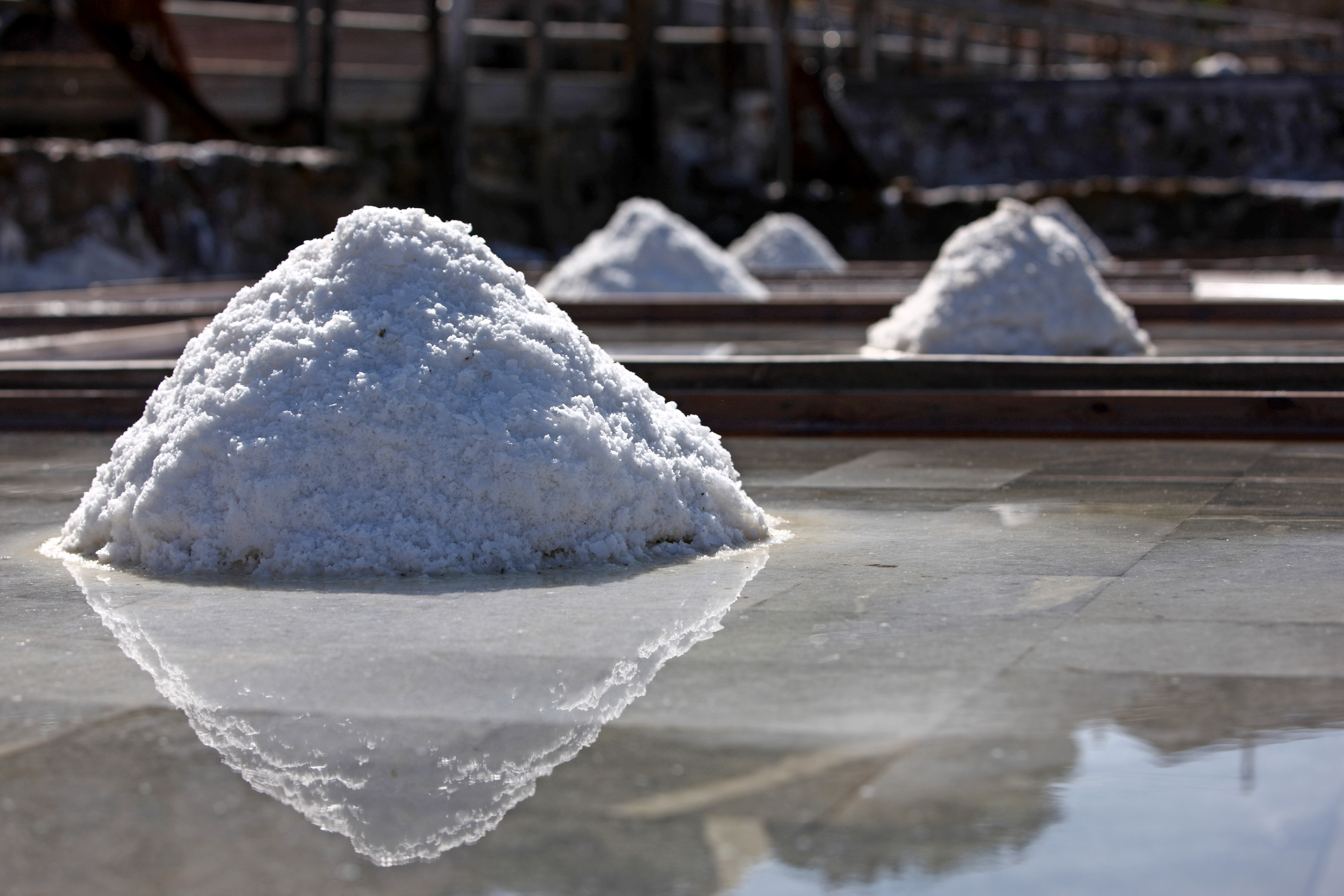
For 4 people
1 kilogram of Añana Salt
6-8 fresh anchovy fillets
50 grams of tomato pulp (either fresh tomato mashed with a fork, or canned tomato)
1 Ibarra pepper, finely chopped
4 garlic shoots
4 chive flowers
extra virgin olive oil
anchovy oil (mix a couple of cured anchovy fillets with about 20 grams of extra virgin olive oil)
1 chuzo (chuzos are highly prized stalactites of salt that form naturally as brine drips from the salt pools and channels of Añana).
Preparation time: 45 minutes
Heat the salt in a frying pan, getting it as hot as possible without letting it burn. Line a tamis or large bowl with a clean, damp cloth (if using a bowl, the cloth should be large enough that the corners hang over the rim).
Meanwhile, rinse the fresh anchovy fillets (if you are starting with whole anchovies, gut them and remove the head, spine, and tail). Spread the tomato pulp in a thin layer on the center of a large, flat plate. Position the anchovy fillets, skin side up, on the tomato pulp. Garnish the fillets with the chopped Ibarra pepper, garlic shoots, chive flowers, and a little extra virgin olive oil.Now use the hot salt to slightly cook the anchovies: With a large spoon or spatula, transfer the hot salt from the frying pan into the cloth-lined bowl or tamis. If you are using a bowl, tie the corners of the cloth together to create a sack. Place the sack or tamis of hot salt on top of the anchovy fillets and leave it for 3-4 minutes. The heat from the salt will gently cook the fillets, and the damp cloth will help keep the fillets moist and prevent the salt from imparting a strong flavor to the fish.
After 3-4 minutes, remove the sack or tamis of salt. The anchovy fillets should have turned whitish. Spoon a bit of anchovy oil over the fillets and then grate some of the chuzo over the plate with a microplane.
Serve as an appetizer.
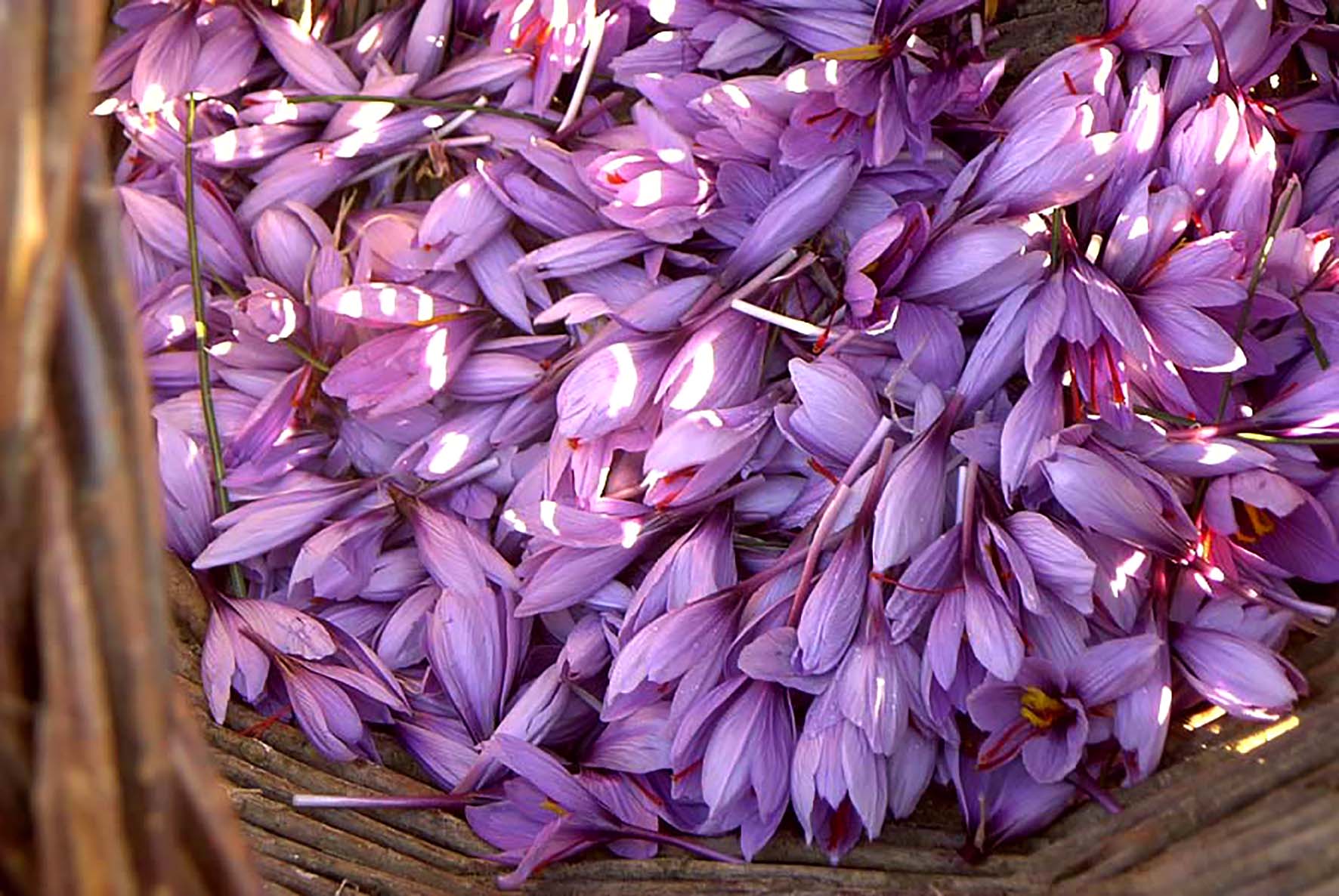
For 4 people
500 grams of rice (carnaroli or another type suitable for risotto)
300 grams of Teruel sausage (or fresh pork sausage)
a pinch of Jiloca Saffron
1 cup of dry white wine
1 liter of vegetable broth
300 grams of champignon mushrooms
125 grams of Parmigiano Reggiano
100 grams of butter
1 onion, chopped
1 garlic clove, finely sliced
1 sprig of parsley, chopped
extra virgin olive oil
salt
pepper
Preparation and cooking time: 40 minutes
Bring the broth to a simmer over a low flame.
In a wide pan, brown the mushrooms in extra virgin olive oil with the sliced garlic and a pinch of salt. Add the parsley and leave to rest. In a separate pan, brown the sausage in extra virgin olive oil. Meanwhile, sweat the onions in half of the butter in a pot and then add the rice to toast it slightly. Add the white wine and let the alcohol evaporate, then add some hot broth, let it evaporate, add more broth, etc., stirring all the while so that the rice becomes creamy but stays al dente . After about 20 minutes, add the mushrooms, saffron, and sausage. When the rice has reached the desired consistency, add the Parmigiano Reggiano and the rest of the butter. Let the risotto rest for 2 minutes before serving.
Discover products from around the world and ones that might be close to where you live. We also invite you to contribute by applying to the Ark of Taste catalogue.
Biodiversity is a bit of a difficult word, and often the only people who think about it are those who deal with it directly (environmentalists, biologists, agronomists, and so on). But it should be well known to all, because it refers to the diversity of life at every level, from the simplest genes and bacteria, to plant and animal species, to complex ecosystems. All of these levels intersect, influence each other, and evolve.
In the history of the Earth, everything has a beginning and an end, and in every age many species go extinct—but never at the startling speed of recent years, a thousand times faster than in previous eras. In addition to wild plants and animals, domesticated plant varieties and animal breeds, selected by human beings, are also disappearing.
Scholars at Stanford University have compared the species and varieties of an ecosystem to the rivets that hold an airplane together: If we get rid of them a few at a time, nothing happens for a while and the plane stays in the air. But, little by little, the structure gets gradually weaker and, at a certain point, you only have to remove one more rivet for the plane to fall apart and crash.
Biodiversity is our insurance for the future: It enables plants and animals to adapt to climate change, parasites and diseases, and the unexpected. A system based on a limited number of varieties is very fragile.
The best-known example of this is the Irish famine of the mid-19th century: In 1845, a blight infected the Irish potato crop, causing either the death or emigration, mainly to the United States, of millions of people. This happened because Irish farmers at the time grew only one potato variety, which eventually proved vulnerable to the spread of the blight. The disease resistance that later made it possible to fortify Irish potatoes was identified among the thousands of potato varieties cultivated by farmers in the Andes and in Mexico.
If that biodiversity had not been preserved, potatoes would not be one of the world’s staple crops today.
For Slow Food, quality food is good, clean and fair.
Food is clean if it respects the Earth, if it does not pollute, if it does not squander or overexploit natural resources on its journey from field to fork. A food is clean to the extent that its supply system is based on certain criteria of naturalness and sustainability. A food is clean if it does not jeopardize the quality of the air, water, and soil, and if its production allows the water, air, and soil to continue producing life.
Clean food doesn’t leave pollution and destruction in its wake: It is produced without the excessive use of fossil fuels and without causing deforestation; it is not transported from one side of the planet to the other; it is seasonal and not over-packaged. Remember that each one of us helps protect this planet with our daily food choices.
Consumers must realize that, even though they are more expensive, “clean” foods are essential for our health and for that of future generations.
Each culture and community has its own identity, and gastronomic heritage is an integral part of this identity. Gastronomic heritage comprises products, traditions, and artisanal knowledge, the result of thousands of years of human presence in a specific place, and also of the exchanges that local communities have established over time with other peoples. Food reflects the entire history of a territory and embodies the ways in which different cultures have merged over the centuries, through cuisine. Intangible cultural heritage is fragile and is transmitted from generation to generation; it is constantly recreated by communities and provides them with a sense of identity and continuity. Given its fragility, gastronomic cultural heritage has to be considered a common good that needs to be protected, celebrated, and enjoyed.
Industrial agriculture and the standardization of taste is wiping out many foods, along with their history and culture. In the last 60 years, thousands of species, breeds, and varieties selected by humans, as well as processed foods (such as breads, cheeses, cured meats, and sweets), have disappeared. Food diversity is a unique and precious genetic, cultural, social, and economic resource. When foods disappear, we lose expertise, knowledge, and identity, in addition to genetic resources, and local economies and cultures are compromised.
Taste, like every other aspect of human culture, is influenced by history and is something that changes over time, just as it varies across space. Choices, exclusions, and preferences differ between individuals, groups, and regions. On one level, taste is sensation, experienced through the tongue and palate; it is by definition subjective, elusive, and difficult to communicate. On another level, and at the same time, taste is also a kind of knowledge; it is an evaluation of what is good or bad, what we like or dislike. And these evaluations and recognitions, as well as the ways in which we classify them, are taught and learned. In this sense, taste is something that is collective and shared; it is part of culture, the result of traditions and aesthetics that are transmitted socially. Together with our genetic heritage, our culture and environment play an important role in determining our food choices. Savoring different foods and interpreting them through multiple traditional gastronomic perspectives helps us to understand and pass on uses and customs linked to our histories, the culture of our territories, and our families. Cultivating a sense of curiosity about foods that do not come from our own traditions helps us to become interested in what is different, to bring diverse realities into contact with each other, and ultimately to understand the importance of protecting and sharing these differences.